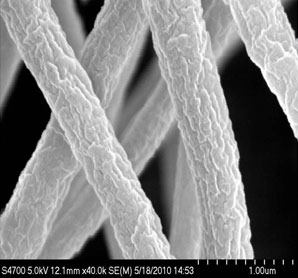Those who presume that the U.S. Forest Service merely manages forest lands will be surprised to learn that it has also joined the nanotechnology game. This summer, the U.S. Forest Products Laboratory opened a $1.7 million pilot plant in Madison, Wisconsin, to develop wood-based nanomaterials on an unprecedented scale. The forest-based cellulosic nanocrystals this plant produces not only exhibit low weight and transparency, but are also stronger than Kevlar fiber. Researchers are developing this technology for initial applications such as clear-composite windshields and reinforced glass.
According to the Forest Products Laboratory, as these products mature and enter the market, “fossil fuel consumption and greenhouse gas emissions will be reduced, manufacturing in rural areas will increase, and many new high-paying jobs will be created.” Challenges remain, including time required to scale the technology and the material’s inherent hydrophilic nature. But this unlikely offshoot of a common, renewable material suggests promising outcomes with impressive properties.
